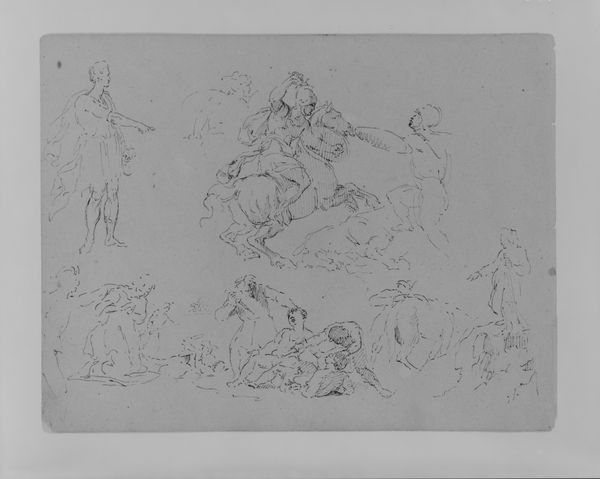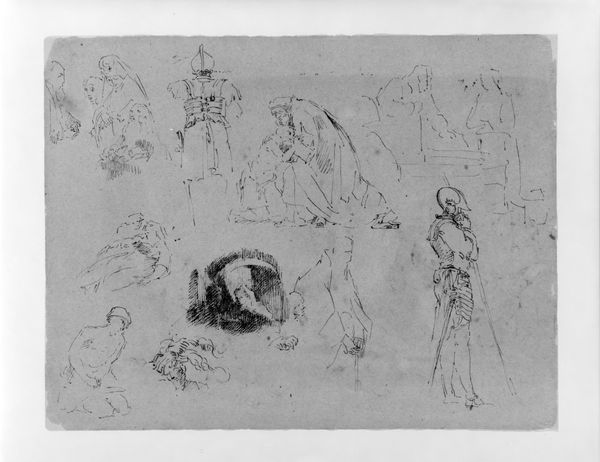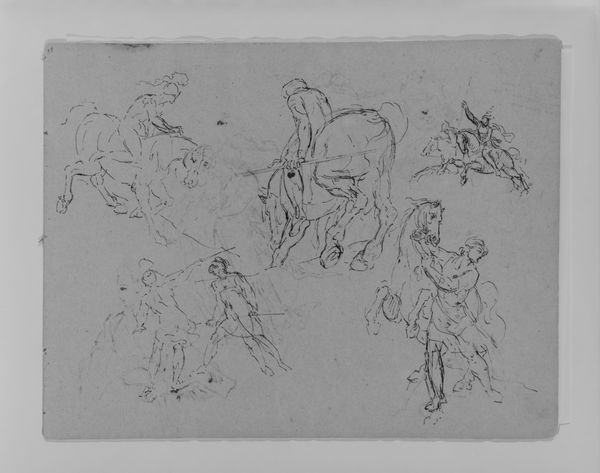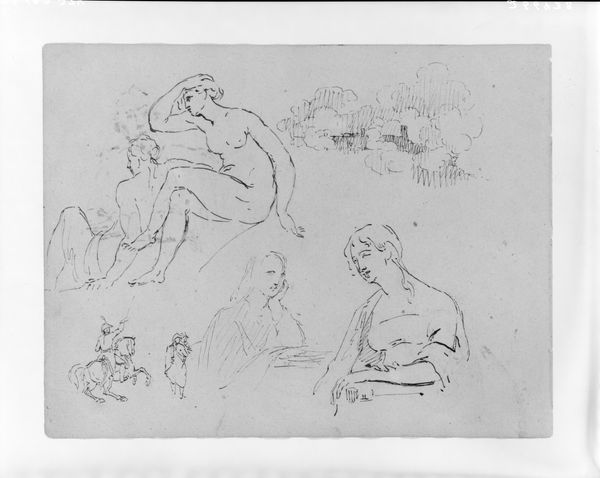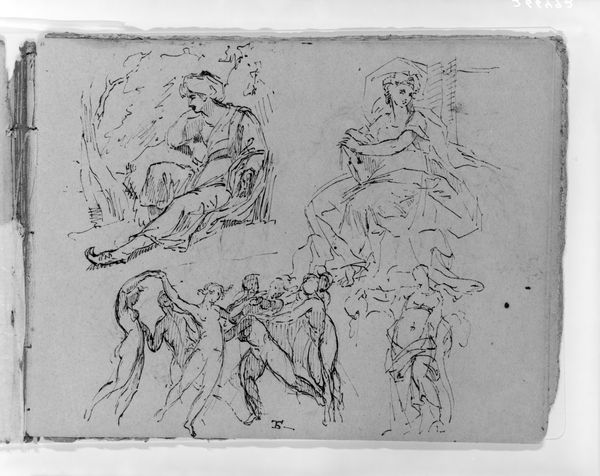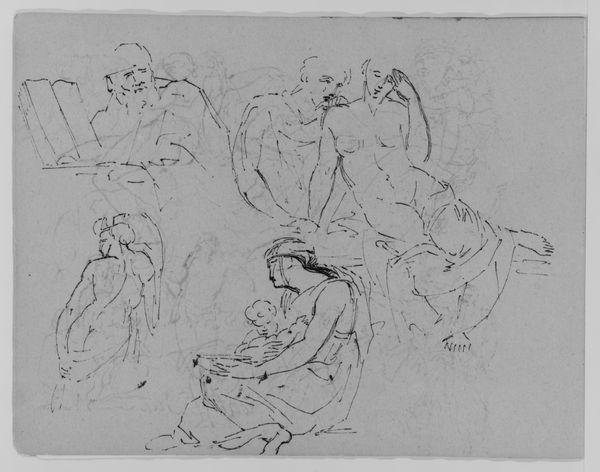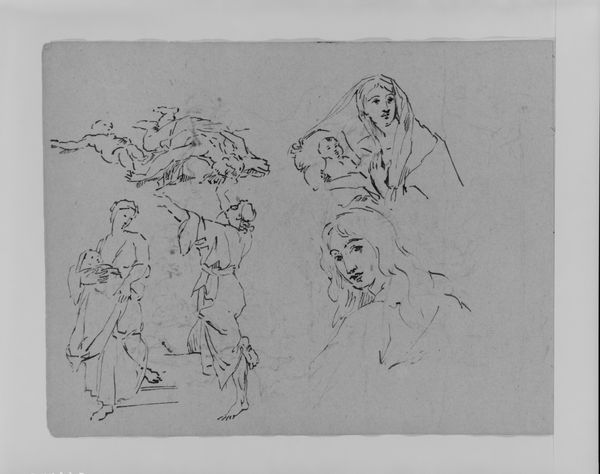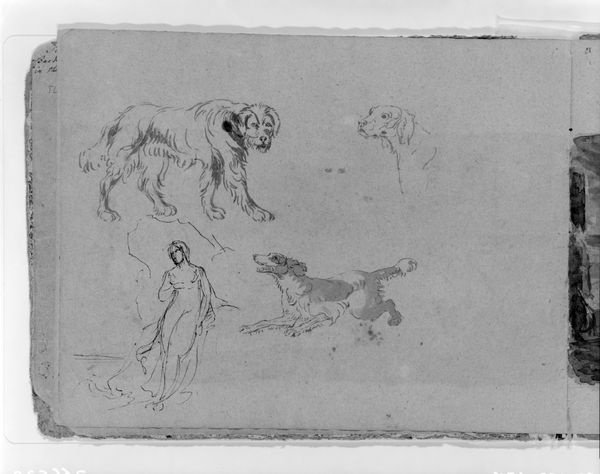
Figure Sketches, Including Pegasus and Perseus with Head of Medusa; (Rape of Persephoney?) (from Sketchbook) 1810 - 1820
0:00
0:00
drawing, paper, pencil, pen
#
drawing
#
narrative-art
#
pencil sketch
#
greek-and-roman-art
#
landscape
#
figuration
#
paper
#
sketch
#
pen-ink sketch
#
pencil
#
line
#
pen
#
academic-art
Dimensions: 9 x 11 1/2 in. (22.9 x 29.2 cm)
Copyright: Public Domain
Editor: Here we have Thomas Sully’s "Figure Sketches, Including Pegasus and Perseus with Head of Medusa," dating from 1810 to 1820. It's a flurry of pen, ink, and pencil on paper. What strikes me is the dynamic, almost chaotic energy of these sketches. How do you interpret this work in terms of its historical context? Curator: Well, let's consider Sully’s engagement with classical mythology in a post-revolutionary era. These weren't simply neutral illustrations; they were loaded with ideological baggage. The figure of Perseus, for example, decapitating Medusa—think about that violent act as potentially symbolic of revolutionary justice, or perhaps a more troubling reflection of patriarchal power. Editor: I see your point about power. Could we also interpret Medusa as representing a suppressed feminine force? The act of beheading becomes a symbolic silencing. Curator: Precisely. And think about Pegasus, the winged horse, often associated with inspiration. What kind of "inspiration" is being depicted here? Is it truly liberating, or does it serve to reinforce existing hierarchies? How does Sully’s personal position, as a white male artist, influence his depiction of these myths? Editor: That really reframes how I see the sketchbook now. It’s not just about mastering form, it’s about Sully engaging with a very specific, and possibly problematic, set of classical ideals. Curator: Exactly! And remember, these myths were often used to justify various forms of social control. Sully is not just recreating these stories; he is inevitably participating in the ongoing dialogue about their meaning. Editor: So, understanding the social and political context isn't just supplementary; it’s crucial to unpacking the potential meanings embedded within these sketches. Thank you! Curator: My pleasure! It’s by questioning the dominant narratives that we can truly appreciate the complexities of art history.
Comments
No comments
Be the first to comment and join the conversation on the ultimate creative platform.
